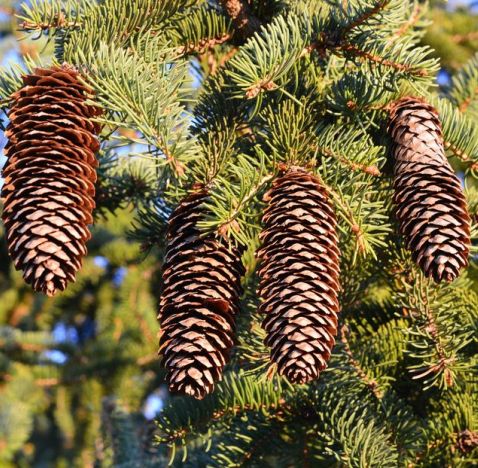

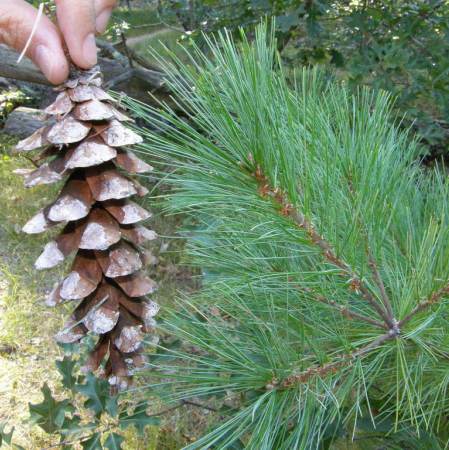
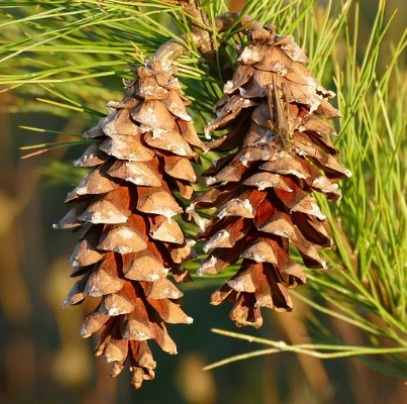
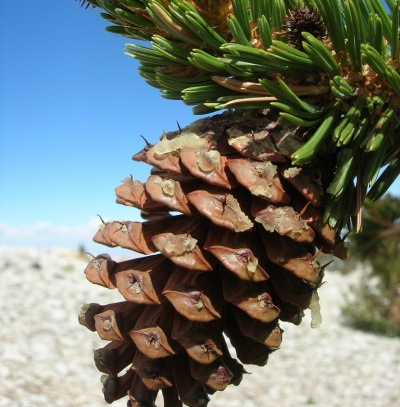
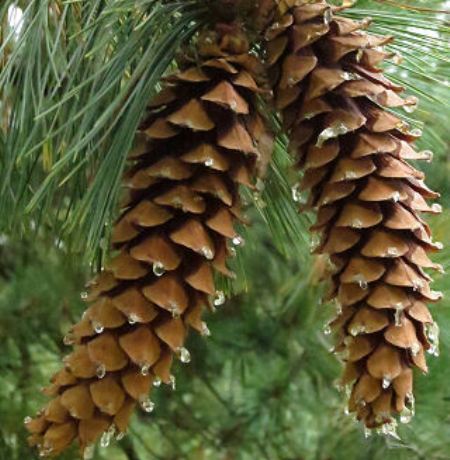
Botanical name Pinus strobus L.
Family Pinaceae
Source Needles (leaves)
Origin Hungary
Processing Method Steam Distilled
Color/Consistency A thin, colorless to pale yellow liquid.
Aromatic Summary / Note / Strength of Aroma A top note with a strong aroma, Pine Organic Essential Oil has a fresh forest smell.
Blends With Citronella, Clary Sage, Coriander, Cypress, Eucalyptus, Frankincense, Juniper, Lavender, Myrrh, Rose Mary, Spikenard and Tea Tree.
Product Abstract
Pine essential oil is obtained from the tree commonly known as pine, which has the scientific name Pinus Sylvestris. It is believed that this tree originated in Austria and Russia before spreading to different parts of the world. If you are still not sure what tree we are referring to, you have probably seen it used as a Christmas tree all over the world! One of the reasons that pine oil has become such an important element in supplemental health is its availability. It is relatively easy to make pine essential oil, and pine trees grow in huge numbers all over the world.
History
Pinus sylvestris is an evergreen coniferous tree growing up to 35 m in height and 1 m trunk diameter when mature, exceptionally over 45 metres (148 ft) tall and 1.7 metres (5 ft 7 in) trunk diameter on very productive sites, the tallest on record being a more than 210-year-old tree growing in Estonia which stands at 46.6 m (152 ft 11 in).
The bark is thick, scaly dark grey-brown on the lower trunk, and thin, flaky and orange on the upper trunk and branches. The habit of the mature tree is distinctive due to its long, bare and straight trunk topped by a rounded or flat-topped mass of foliage. The lifespan is normally 150–300 years, with the oldest recorded specimens in Lapland, Northern Finland over 760 years.
Harvesting/Extraction Information
Pine essential oil is obtained using steam distillation. Fresh twigs and needles are most often used for extracting the oil. Pine cones are also used by many manufacturers for obtaining the oil, and since pine trees are so abundant in nature, the oil is very cheap and widely available.
Common Usage
Caution
Dilute well before use; for external use only. May cause skin irritation in some individuals; a skin test is recommended prior to use. Contact with eyes should be avoided.
Key constituents
a-Pinene 30.8–36.8%
b-Pinene 31.1–33.3%
b-Myrcene 4.7–13.1%
b-Phellandrene 5.4–6.0%
Camphene 5.2%
(þ)-Limonene 4.0–5.1%
d-3-Carene 0–3.7%
Bornyl acetate 0.9–1.9%
Terpinolene 0.9–1.0%
a-Terpineol 0.4–1.0%
Quality Pine needle oils may be adulterated with turpentine oil, mixtures of terpenes such as a-pinene, camphene and (þ)-limonene, and esters such as ()-bornyl acetate and isobornyl acetate (Kubeczka 2002; Burfield 2003).
Safety summary
Hazards Skin sensitization if oxidized.
Cautions Old or oxidized oils should be avoided.
Our safety advice
Because of its high a-pinene content we recommend that oxidation of white pine oil is avoided by storage in a dark, airtight container in a refrigerator. The addition of an antioxidant to preparations containing it is recommended.
Regulatory guidelines
Essential oils derived from the Pinaceae family, including Pinus and Abies genera, should only be used when the level of peroxides is kept to the lowest practicable level, for example by the addition of antioxidants at the time of production.
Organ-specific effects
Adverse skin reactions No information was found for white pine oil, but autoxidation products of a-pinene can cause skin sensitization.
Reproductive toxicity The lowreproductive toxicity of a-pinene, b-pinene,b-myrcene and(þ)-limonene suggests that white pine oil is not hazardous in pregnancy.
Systemic effects
Acute toxicity No information found.
Carcinogenic/anticarcinogenic potential No information was found for white pine oil, but it contains no known carcinogens. (þ)-Limonene displays anticarcinogenic activity.
Comments
Limited availability.